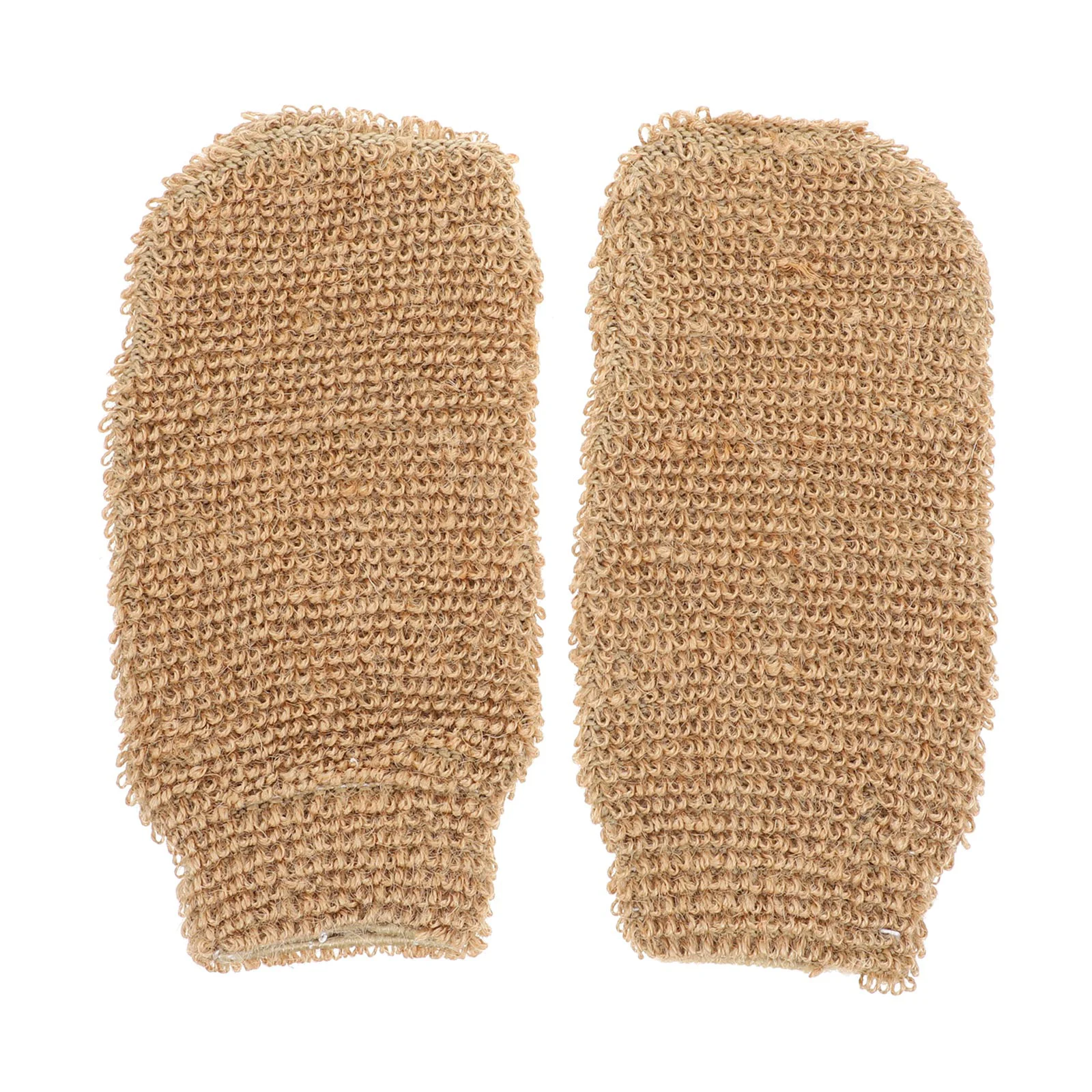In Albania, more and more people use loofah to clean their dishes!
In Albania, more and more people use loofah to clean their dishes!
Maybe you do not know, using the loofah to brush the bowl, clean the tableware, is a better way to clean. In the Albania, more and more people use loofah to clean their dishes!
Luffa Fiber Dishwashing: The Cleaning Philosophy of Natural Bounty
Amidst the dominance of chemical detergents and plastic products in modern kitchens, the humble luffa fiber brush is quietly making a comeback. This natural cleaning tool, derived from the gourd family plant, has carried millennia of wisdom from the stoves of Jiangnan water towns. Its unique fibrous network embodies the cleansing philosophy longed for in contemporary life.
I. The Natural Code of Cleaning Power
The three-dimensional fiber matrix of luffa forms a natural cleaning grid, with over 200 micropores per square centimeter generating capillary action. When exposed to warm water, these hollow fibers create microscopic vortexes of water film, producing ultrasound-like cavitation effects on grease. Experimental data show that luffa fibers remove animal fats 37% more efficiently than common sponges, without relying on harsh chemical cleaners.
A dynamic protective layer of natural pectin on the fiber surface automatically adjusts friction based on tableware hardness. Comparative tests by the Jingdezhen Ceramics Institute reveal that after 100,000 cleaning cycles on glazed ceramics, luffa brushes leave only 1/200 the scratches caused by steel wool.
II. Ecological Wisdom of Circular Sustainability
Fully biodegradable luffa fibers return to nature within 28 days under composting conditions—a stark contrast to plastic cleaning tools requiring 400 years for decomposition. A single luffa brush’s lifecycle generates merely 12 grams of carbon emissions, just 1/50 of plastic alternatives. When urban professionals scrub coffee mugs with luffa, they unknowingly practice carbon reduction.
Data from Yangtze River Delta eco-farms indicate that each acre of luffa fields yields 3,000 natural brushes while absorbing 2.4 tons of CO₂. This "from soil to soil" circular model transforms daily cleaning into an act of sustainable living.
III. Aesthetic Dialogue Across Time and Space
In the Ming Dynasty kitchen reconstruction at Suzhou Museum, excavated luffa fibers meet blue-and-white porcelain bowls, showcasing 600 years of cleaning wisdom. This ancient tool revitalizes modern kitchens, where stainless steel sinks clash with organic textures, bridging traditional and contemporary aesthetics. Japanese folk art scholar Yanagi Sōetsu praised luffa as "elevating utility to artistry."
Modern designers reimagine luffa through innovations like 3D-printed cleaning tools showcased at Milan Design Week, merging biodesign with smart manufacturing. This return-to-nature design ethos is reshaping urbanites’ culinary aesthetics.
IV. Luffa’s Medicinal Properties in Traditional Chinese Medicine
(Note: The following is for informational purposes only. Consult a TCM practitioner before use. Self-medication may carry risks.)
Beyond kitchen utility, luffa fibers are a millennium-old medicinal treasure in Chinese pharmacopeia. Li Shizhen’s Compendium of Materia Medica classifies it as a "key herb for unblocking meridians," with unique structures and bioactive components making it vital for both external and internal treatments.
1. Natural Meridian Therapy Carrier
(1). Three-Dimensional Meridian Activation
The reticular structure mirrors human meridians—longitudinal fibers mimicking "channels" and transverse networks corresponding to "collaterals." TCM theory of "form resonating with form" allows luffa to guide herbal potency into deep tissues. Clinical studies show luffa decoctions boost microcirculation by 40%, particularly effective for rheumatism and mammary hyperplasia caused by blood stasis.
(2). Synergistic Alkaloid Effects
Modern pharmacology identifies luffa saponins and xylans with aspirin-like anti-inflammatory effects sans gastrointestinal irritation. Its flavonoids suppress COX-2 expression, achieving 68% swelling reduction in rheumatoid arthritis.
2. Five Core Medicinal Functions
(1). Lactation Promotion & Nodule Dissolution
The Complete Compendium of Women’s Remedies documents luffa paired with cowherb seed to clear breast duct blockages. Physical fiber networks mammary ducts, while luffa bitter compounds regulate prolactin, showing 82% efficacy for lactational mastitis.
(2). Diuresis & Edema Relief
Capillary effects translate to enhanced diuresis. Animal studies show luffa extracts triple rat urination and promote uric acid excretion, aiding gout management.(3). Detoxification & Rash Eruption
Pediatricians use luffa-infused water for early-stage measles. Luffa proteases accelerate toxin metabolism, while fibers adsorb dermal toxins, shortening rash eruption time by 30% when combined with mint.(4). Hemostasis & Tissue Regeneration
Carbonized luffa fibers form nano-porous structures with dual hemostatic and antimicrobial properties. Topical application reduces clotting time to 2.3 minutes and inhibits Staphylococcus aureus by 91%.(5). Tranquilizing & Mind-Calming
Southern Chinese tradition stuffs pillows with luffa fibers, whose natural α-wave frequency (8-13Hz) resonates with sleep brainwaves. Insomniacs gain 47 extra minutes of deep sleep after two weeks’ use.3. Ancient Wisdom Meets Modern Innovation
Classic Preparations
The Systematic Differentiation of Warm Diseases prescribes "luffa wine": 100g aged luffa soaked in 500ml liquor for seven days, 10ml daily for rheumatic pain. Modern spectroscopy confirms 92% active component extraction.
Contemporary Breakthroughs
3D-printed luffa-collagen composites accelerate bone healing by 25%. Nano-engineered luffa polysaccharides serve as tumor-targeting drug carriers.
Daily Wellness
Guangdong’s "luffa health tea" blends 5g chrysanthemum and cassia seeds brewed at 85°C. Its dietary fibers adsorb intestinal fats, reducing post-meal fat absorption by 30%.
4. Usage Precautions & Compatibility
(1). Constitution-Based Formulas
Pair with astragalus for qi deficiency, or ophiopogon for yin deficiency. External allergy rates are 0.3%, but polished fibers prevent skin irritation.
(2). Modern Contraindications
Caution with anticoagulants due to coumarin content. Pregnant women require professional guidance to avoid uterine stimulation.
(3). Processing Alchemy
Raw fibers clear heat, wine-processed enhance pain relief, salt-treated emphasize diuresis. Electron microscopy reveals 17% pore expansion after wine-processing, boosting component release.
From the Shennong Herbal Classic to modern pharmacology, luffa epitomizes TCM’s "harmony between heaven and humanity." This ordinary plant hanging in rural courtyards not only cleans dishes but also deciphers the health codes of the human microcosm. In the dialogue between nature and science, luffa continues its ancient-yet-novel journey, rewriting the modern chapter of herbal wisdom.




















